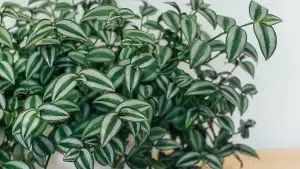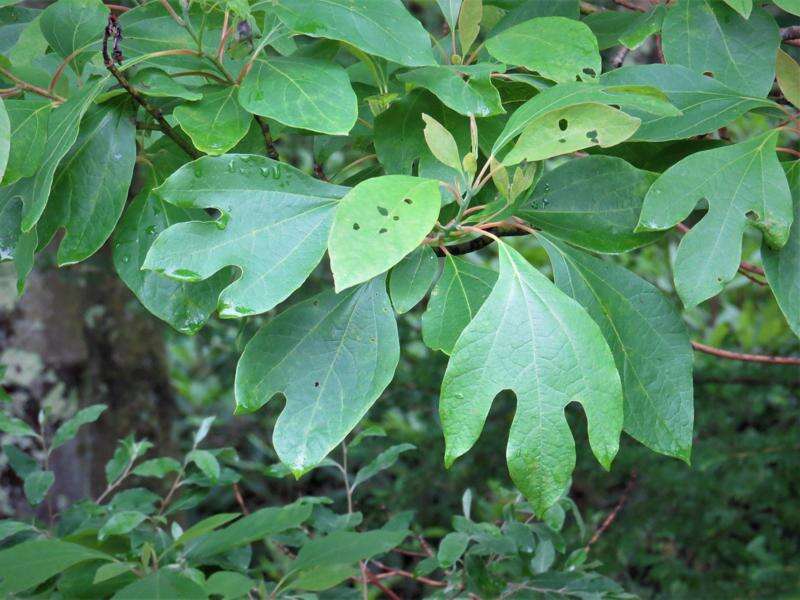How to care for a wandering jew plant?
The Wandering Jew plant (Tradescantia zebrina) is a popular houseplant recognized for its stunning foliage and ease of care. In this comprehensive tutorial, we will show you how to care for a Wandering Jew plant, ensuring that it thrives and brings beauty to your house.
How to care for a wandering jew plant
Understanding the Wandering Jew Plant

The Wandering Jew plant, a spiderwort, is native to Central America. It stands out for its trailing vines and vivid foliage with green, purple, and silver stripes. Both new and seasoned gardeners can benefit from this plant’s hardiness and flexibility. But one must make sure to maintain the wandering jew plant with care.
Optimal growth conditions
Light requirements
The Wandering Jew plant prefers bright, indirect light. Direct sunshine can scorch the leaves, but insufficient light might result in lanky growth and faded colors. Place your plant near a north or east-facing window to ensure it receives ample light without direct sunlight.
Temperature and humidity
This plant enjoys warm temperatures of 65°F to 75°F (18°C to 24°C). It can handle slightly cooler temperatures, but avoid drafts and rapid temperature fluctuations. The Wandering Jew plant also thrives in heavy humidity. To maintain proper humidity levels, spray the plant on a regular basis or use a humidifier.
Watering Guidelines
Watering frequency
Proper watering is critical to the health of your Wandering Jew plant. When the top inch of soil is dry, water the plant. During the growing season (spring and summer), this could entail watering once a week. During the dormant season (autumn and winter), water once every two to three weeks.
Watering Technique
Water the plant thoroughly until the water drains from the pot’s bottom. Make sure the pot has drainage holes to keep water from sitting at the bottom, which can lead to root rot. The Wandering Jew plant is sensitive to root rot, so avoid overwatering.
Soil and fertilization of wandering jew plants
Soil requirements
A well-drained potting mix is required for the care of the Wandering Jew plant. A combination of ordinary potting soil and perlite or sand will provide adequate drainage. You may also use a professional cactus or succulent combination.
Fertilisation Schedule
During the growing season, feed your plant a well-balanced liquid fertilizer once every four to six weeks. To avoid over-fertilizing and damaging the plant, dilute the fertilizer to half strength. There is no need to fertilize during the dormant season.
Pruning and propagating for wandering jew plants
Pruning Techniques
Regular pruning helps the Wandering Jew plant keep its shape and fullness. Trim back leggy stems to promote bushy growth. You can also remove any dead or damaged leaves to keep the plant looking good.
Propagation Methods
Stem cuttings are an easy way to propagate the Wandering Jew plant. Here’s how.
Stem: Choose a healthy stem that has at least a few leaves.
Cut the stem: With a clean pair of scissors, cut the stem immediately below a node.
Prepare for cutting: Remove the bottom leaves from the cutting, leaving a few leaves on top.
Rooting the Cutting: Soak the cutting in water or place it directly in damp potting soil. If using water, change it every several days to avoid stagnation. Roots should form within a few weeks.
Transplanting: Once the roots are a few inches long, place the cutting in a pot with well-drained soil.
Seasonal Care Tips for wandering jew plants
Spring and summer
During the growing season, make sure your Wandering Jew plant gets plenty of light and regular hydration. This is also the optimal period to fertilize and propagate the plant.
Fall and winter
During the dormant season, limit watering and fertilization. Keep the plant in a warm, humid environment with indirect sunlight.
Repotting the wandering jew plant
As your Wandering Jew plant matures, it may overrun its pot. Repotting is necessary to create additional space for root development and replenish soil nutrients.
When to Repot: Repot your plant every 1-2 years, or when you detect the roots crowding or growing outside of the drainage holes.
Choosing a Pot: Choose a pot that is one size larger than your present one, and make sure it has drainage holes.
How to Report:
Remove the plant: Carefully remove the plant from its present pot. To loosen the soil, tap the pot’s sides.
Prepare the new pot. Add a layer of fresh, well-draining potting mix to the bottom of the new container.
Plant Transfer: Place the plant in the new container, filling the space around the root ball with fresh dirt. To eliminate air pockets, lightly press the soil down.
Water Thoroughly: After repotting, water the plant thoroughly to help it settle into its new environment.
Related Posts:
Enhancing humidity to care for a wandering jew plant
The Wandering Jew plant thrives in high humidity, which can be difficult to maintain inside, particularly during the winter when indoor air is drier.
Plant Grouping: Arrange your houseplants to produce a more humid atmosphere.
Pebble Trays: Place a tray containing pebbles and water under the pot. The water evaporates, increasing the humidity around the plant.
Humidifiers: Using a humidifier in the room can dramatically increase the humidity levels, which is beneficial to your Wandering Jew plant and other home plants.
Maximizing Growth and Color
Consider the following strategies to maximize growth and color brilliance in your Wandering Jew plant:
Consistent Lighting: Use a consistent light source. Rotate the plant at regular intervals to maintain even light exposure and prevent one-sided growth.
Nutrient-rich soil: To maintain nutrients, refresh the top layer of soil once a year with a mixture of fresh potting soil and compost.
Regular cleaning: Dust can accumulate on the leaves, reducing photosynthesis. To keep the leaves fresh, lightly wipe them off with a moist towel.
Troubleshooting: Common Problems
Faded leaf colors
If the brilliant colors of your Wandering Jew plant’s leaves fade, it is most likely due to a lack of light. Move the plant to a brighter location where it will receive most of the day’s bright, indirect light.
Yellowing leaves
Yellow leaves could indicate overwatering or poor drainage. Check the soil moisture content and drainage holes. Adjust your watering schedule accordingly, and make sure the pot lets extra water drain.
Pest infestations
Inspect your plant regularly for pests like spider mites and aphids. Early discovery can help prevent serious damage. Treat infestations with insecticidal soap or neem oil.
Look for spider mites with delicate webbing and small, moving spots. Increase the humidity and apply neem oil to the affected areas.
Aphids are little, soft-bodied insects that can form clusters on fresh growth. To remove them, spray with a forceful stream of water or apply insecticidal soap.
Leggy growth
Insufficient lighting causes the plant to stretch towards the light source, resulting in leggy growth. Move the plant to a brighter spot and try trimming the elongated stems to promote bushier growth.
FAQS
How frequently should I water the Wandering Jew plant?
Water your Wandering Jew plant once the top inch of soil is dry. This usually entails watering once a week during the growing season and every two to three weeks during the dormant phase.
What type of lighting does the Wandering Jew plant require?
The Wandering Jew plant prefers bright, indirect light. Avoid direct sunlight, which can burn the leaves, and insufficient light, which can result in lanky growth and faded colors.
What type of soil works best for a Wandering Jew plant?
Make a well-drained potting mix by combining normal potting soil with perlite or sand. A commercial cactus or succulent combination is also acceptable.
How do I control bugs on my Wandering Jew plant?
Check your plant regularly for pests like spider mites, aphids, and whiteflies. You can treat infestations with insecticidal soap, neem oil, or by wiping the leaves down with a damp cloth. Isolate afflicted plants to prevent pests from spreading.
Conclusion
How to care for a Wandering Jew plant is simple as long as you follow its specifics for light, watering, soil, and humidity. You may appreciate the brilliant splendor of this robust plant by maintaining ideal growing conditions and swiftly addressing typical concerns. Regular trimming, fertilization, and pest management will keep your Wandering Jew plant healthy and thriving in your house.



